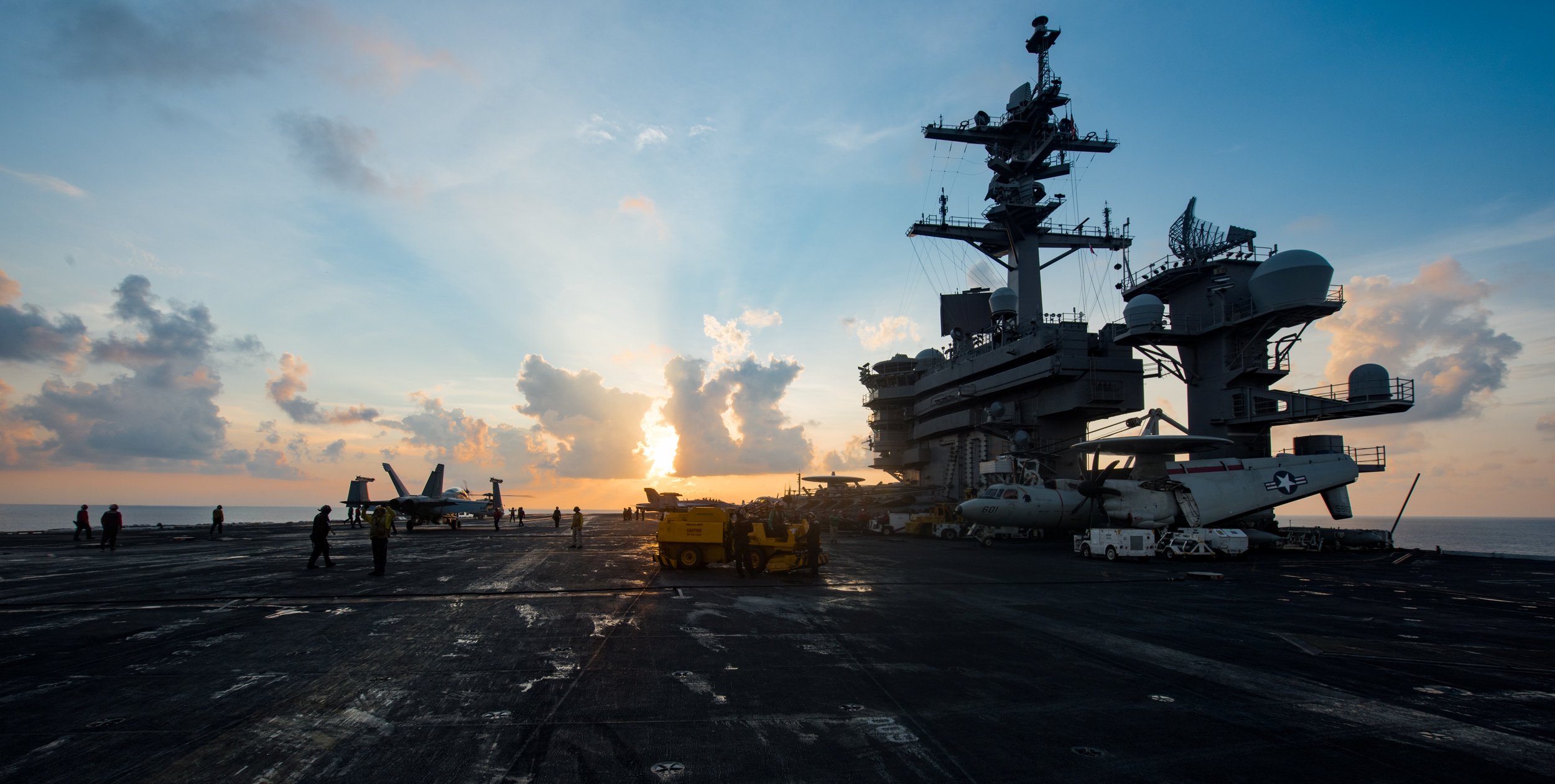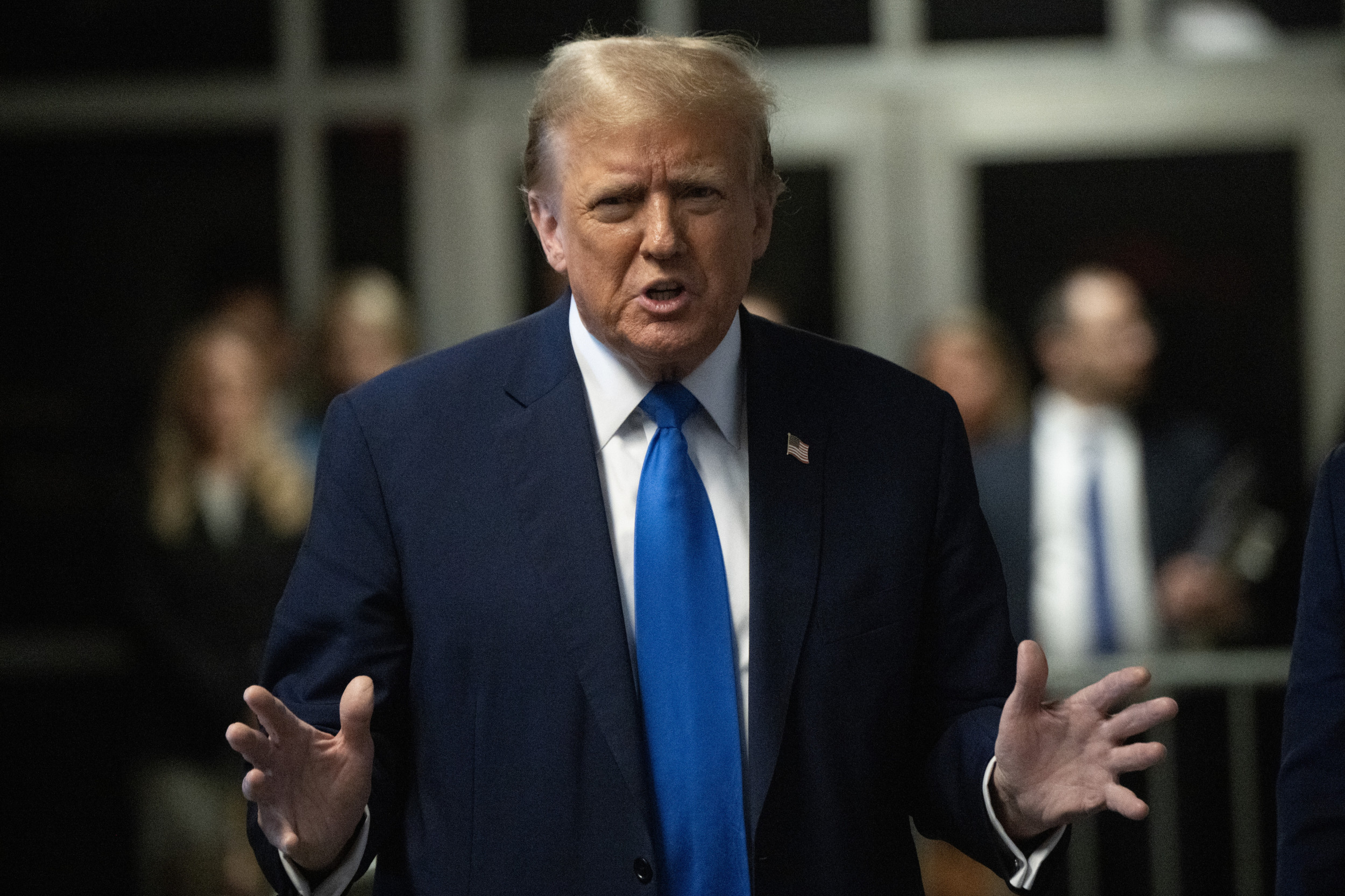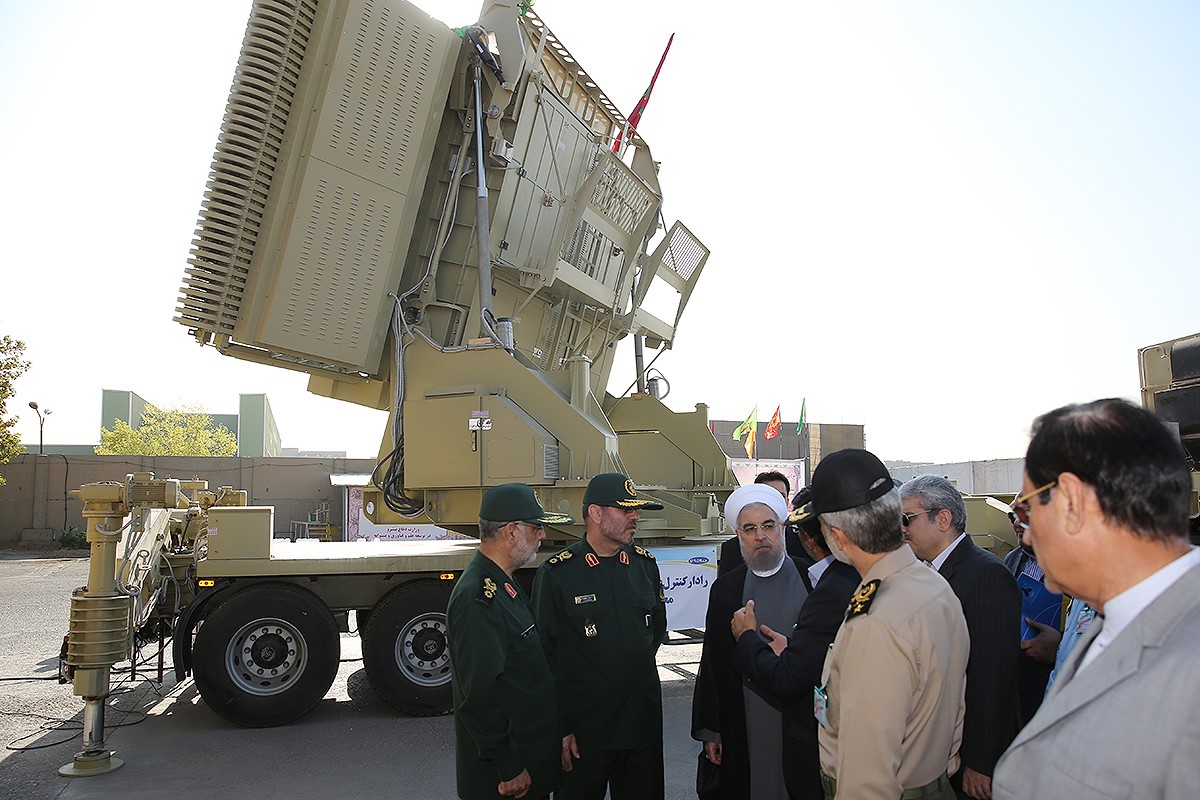
In an April 12 interview President Donald Trump made clear the U.S. would respond to continued missile tests by rogue state North Korea.
"We are sending an armada. Very powerful," Trump told Fox Business Channel. "We have submarines. Very powerful. Far more powerful than the aircraft carrier. That, I can tell you."
Trump made the comments during a tense stand-off with the regime in Pyongyang, with Kim Jong Un putting on a bombastic display of weapons Sunday during anniversary celebrations. The deployment of U.S. vessels provoked fears of open conflict between the powers, and South Korea sought to quell fears of imminent war, while China called for peaceful negotiations.
There was surprise on Monday though, when the U.S. Navy posted pictures of the North Korea-bound vessels near Indonesia, thousands of miles from the Korean Peninsula. Here's how the administration's account of the mission of the "armada" has shifted and changed.
April 9
On April 9 the U.S Navy's Third Fleet issued a statement that said Admiral Harry B. Harris Jr. of the Pacific Command had ordered USS Carl Vinson and a carrier strike group to sail to the western Pacific. A U.S defense official told CNN the deployment was in response to North Korean provocations.
The group consisted of aircraft carrier USS Carl Vinson, weighing 97,000 tons with 60 aircraft, as well as two guided-missile destroyers and a guided-missile cruiser, and had set sail from Singapore on April 8, according to the statement.
National Security Advisor General H.R McMaster told Fox News l ater that day that the deployment was a "prudent" move, designed to give the president "a full range of options to remove" the threat posed North Korean leader Kim Jong Un.
Two days before the deployment North Korea had held scud missiles tests, the latest in a series of displays of military strength by the pariah state.
April 11
North Korea responded to the deployment, accusing the U.S. of "reckless acts of aggression."
"We will make the U.S fully accountable for the catastrophic consequences that may be brought about by its high-handed and outrageous acts," said a statement from the foreign ministry reported on state media.
The South Korean government said that the U.S would not launch attacks without its consent, seeking to quell rising anxieties among its citizens.
However, on April 11 reports showed that instead of sailing north toward North Korea, the vessels had instead sailed south towards the Indian Ocean. Defense officials told CNN that the vessels were taking part in joint exercises with the Australian navy before being deployed to the Korean peninsula.
When quizzed on the location of the ships during his daily press briefing, White House spokesman Sean Spicer said, "The forward deployment is deterrence, presence." He added, "I think when you see a carrier group steaming into an area like that, the forward presence of that is clearly, through almost every instance, a huge deterrence."
Defense Secretary James Mattis later that day said the Indian Ocean exercises had been canceled. "[The ship] was originally headed in one direction for an exercise, and we canceled our role in that exercise…We had to explain why she wasn't in that exercise."
However, Pentagon officials corrected the claim in retrospect, adding a note on April 18. That said the navy had only canceled a port call for the Carl Vinson in Freemantle, Australia, with officials telling the New York Times it was out of concern that pictures of sailors on shore leave during a period of escalating tensions with Pyongyang would play badly.
The exercises had in fact gone ahead as planned.
April 12
On the same day Trump told Fox an "armada" had been sent to North Korea, U.S. Secretary of State Rex Tillerson had a different message. He told reporters in Moscow that the Vinson was on a "routine" deployment and they should "not to read too much" into reports of its Korea mission.
April 15
Three days later photographs on the U.S Navy website showed the Vinson entering the Sunda Strait off the coast of Indonesia. The pictures were picked up by Defense News, which noted the vessel was thousands of miles from where the world thought it was, off the Korean Peninsula.
That weekend North Korea celebrated Day of the Sun, marking the founding of the state by Kim Il Sung. Observers said North Korea could launch a nuclear missile test to mark the occasion, but the end the regime did not and instead held a military parade.
April 18
On April 18, White House officials blamed the conflicting messages on a miscommunication between the Pentagon and White House, and said commanders had not kept the administration apprised of its movements.
Spicer told reporters on Wednesday that the ships were now sailing towards North Korea, while Defense Department officials said the Carl Vinson is expected to arrive in the region next week.
Uncommon Knowledge
Newsweek is committed to challenging conventional wisdom and finding connections in the search for common ground.
Newsweek is committed to challenging conventional wisdom and finding connections in the search for common ground.
About the writer
To read how Newsweek uses AI as a newsroom tool, Click here.








